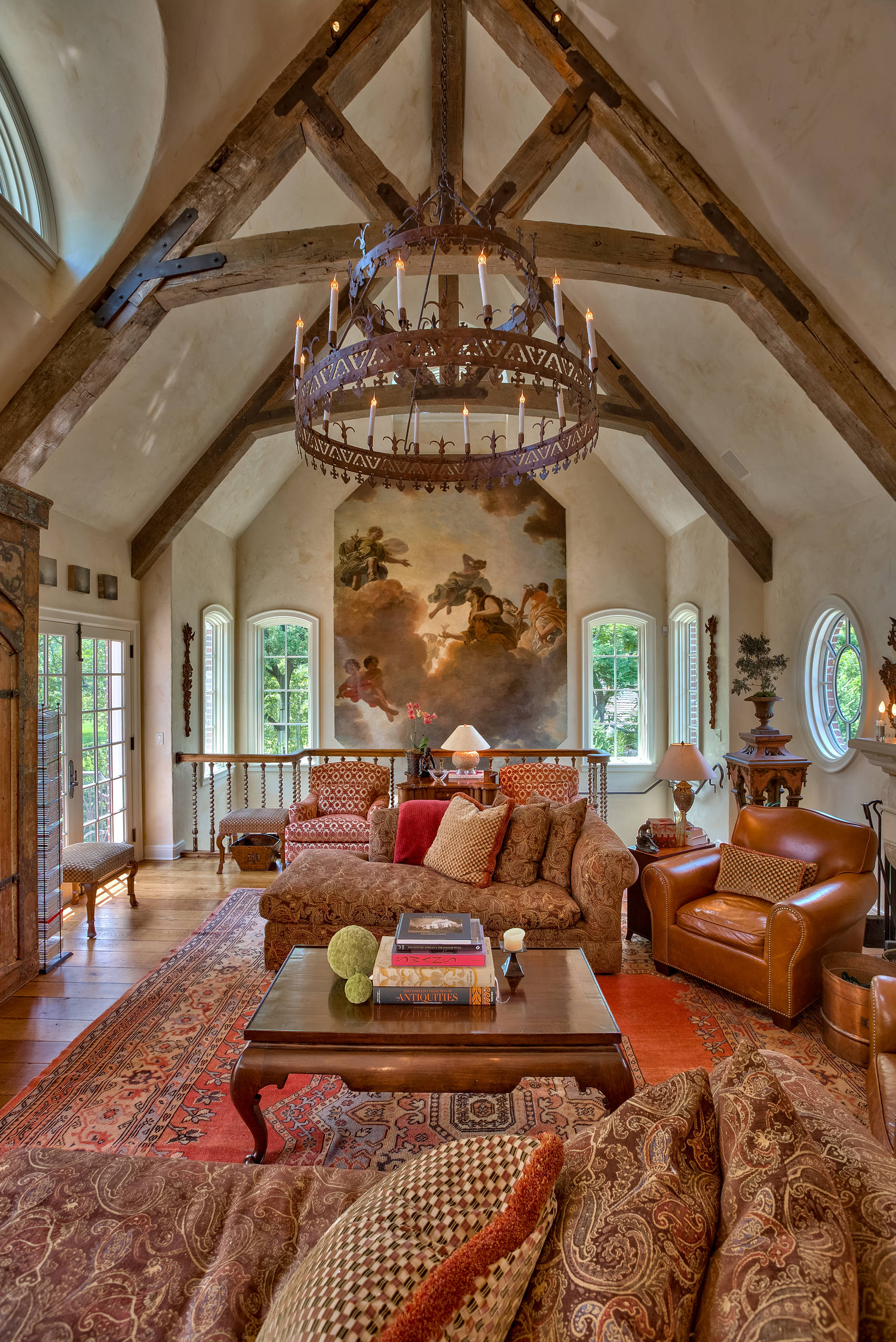Transforming your home into a medieval haven can seem daunting, but it’s an incredibly fulfilling journey that adds unique character and charm. With rich colors, textured fabrics, and vintage-inspired elements, you can evoke the warm and inviting atmosphere of a medieval castle or cottage. Join me as I share my personal experience and tips to help you master the art of medieval decor!
Understanding Medieval Decor: The Essence of Style
The medieval period, spanning roughly from the 5th to the late 15th century, is characterized by its dramatic aesthetic, filled with historical significance and artistry. When we think of medieval decor, we envision:
- Rich, warm colors like deep reds, greens, and golds.
- Wooden beams and stone walls.
- Woven textiles, tapestries, and velvets.
- Rustic furniture made from solid woods.
- Candles and wrought iron accents.
Key Elements of Medieval Decor

Color Palettes
Colors play a crucial role in setting the tone for medieval decor. Here’s a quick comparison of the best color schemes:

| Color Scheme | Description | Pros | Cons |
|---|---|---|---|
| Rich Jewel Tones | Deep reds, greens, blues, and purples. | Luxurious feel; bold statement. | Can overwhelm small spaces. |
| Earthy Tones | Warm browns, creams, and muted greens. | Cozy and inviting; versatile. | May feel dull without accents. |
| Metallic Accents | Golds and silvers to highlight spaces. | Adds elegance and shine. | Requires careful balance. |
Furnishings

Medieval furnishings emphasize craftsmanship and durability. Look for:
- Heavy wooden tables and chairs, preferably made from oak or walnut.
- Carved pieces that showcase intricate designs.
- Bench seating to maximize the rustic feel.

Choosing the Right Furniture
While selecting furniture, consider getting some antique or vintage pieces. They carry stories and textures that new furniture simply cannot replicate. For example, I found an oak cabinet at a flea market that became the focal point of my living room!

Textiles: Adding Warmth and Texture
Fabrics That Speak Volumes

Textiles are vital in creating a medieval ambiance. Here are some key points to keep in mind:
- Use heavy drapes made of velvet or brocade to frame windows.
- Layer different fabrics for pillows, throws, and bed coverings.
- Incorporate rugs with intricate patterns or rich textures.

Creating a Cozy Atmosphere with Textiles
In my own home, I layered a velvet throw over a linen sofa, adding warmth and depth to my living space. Don’t shy away from mixing styles or patterns—this eclectic approach can enhance the medieval flair!
Lighting: The Golden Glow of Candles and Lanterns
Choosing the Right Lighting Fixtures
Lighting is crucial in medieval decor, casting a warm and inviting glow. Consider these options:
- Wrought iron chandeliers and sconces for a dramatic effect.
- Use plenty of candles—candle holders made of brass or iron are ideal.
- Oil lamps can add authenticity to the medieval theme.
Maximizing Natural Light
If your space allows, utilize natural light to complement your medieval decor. Opt for lighter fabrics that won’t block the sunlight while still ensuring privacy.
Art and Accessories: Telling a Story
Finding the Right Artwork
Incorporate artwork that resonates with the medieval theme:
- Tapestries depicting historical scenes or nature.
- Artwork featuring knights, castles, and mythical creatures.
- Framed antique maps or manuscripts.
Accessorizing Your Space
Accessories can make or break your medieval decor. I love using vintage books, rustic wooden bowls, and maps to bring my space to life. Pay attention to smaller details—the right accessory can complete the look.
Outdoor Spaces: Extending the Medieval Charm
Creating a Medieval Garden
Your outdoor space can also reflect the medieval aesthetic. Here’s how:
- Use stone or wooden benches for seating.
- Incorporate climbing plants, roses, and herbs.
- Build a fire pit surrounded by rustic seating for gatherings.
Outdoor Decor Ideas
I often host gatherings in my garden adorned with lanterns and rustic table settings, creating an enchanting atmosphere under the stars.
Pros and Cons of Medieval Decorating
Pros
- Creates a warm, inviting atmosphere.
- Unique and timeless appeal.
- Encourages creativity and personal expression.
Cons
- Can be expensive if sourcing authentic pieces.
- May require significant DIY effort.
- Risk of overwhelming a small space with heavy decor.
Frequently Asked Questions
What are the best materials for medieval decor?
The best materials include heavy woods, natural fibers, and wrought iron. These materials capture the essence of medieval craftsmanship.
How can I create a medieval ambiance without spending too much?
Consider thrift stores or flea markets for vintage finds. DIY projects can also help you create unique pieces. Layering fabrics and using candles effectively can also enhance the atmosphere without a hefty price tag.
Can I mix modern decor with medieval elements?
Absolutely! Mixing styles can lead to a unique and personalized aesthetic. Just ensure that the colors and materials complement each other for a cohesive look.
Conclusion: Embrace Your Medieval Journey
Decorating your home in a medieval style is not just about aesthetics; it’s about creating a space that feels like an extension of yourself. Embrace the character and charm that medieval decor offers, and watch as your home transforms into a cozy retreat filled with stories and history. Whether you choose to go all out or incorporate small touches, the medieval style can surely enchant both you and your guests.
Happy decorating!